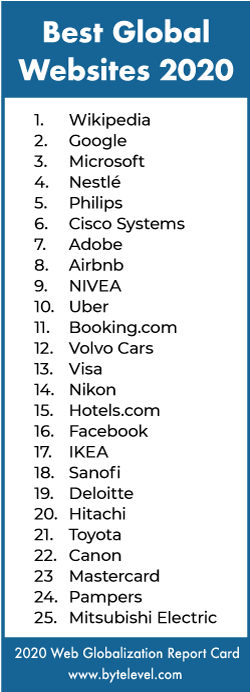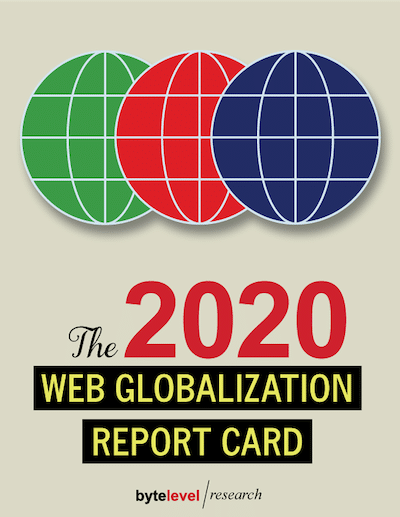In keeping with past years, I’m pleased to announce the top 25 websites from the 2020 Web Globalization Report Card.

When compared with last year’s top 25 list, there are a number of new entrants to the list:

Airbnb: As I’ve mentioned in previous posts, the company doubled its language portfolio over the past year, going well past 60 languages. That, and an improved web redesign, has positioned the website well for the (post-pandemic) future.
Sanofi: At 39 languages, Sanofi is on par with two other medical companies in regards to global reach. But it stands apart in global consistency and depth of localization.
Mastercard: Mastercard added six languages over the past year. It supports a global template and also invests heavily in localization, including culturally relevant photographs.
Mitsubishi Electric: Has made substantive improvements over the past two years. It now uses geolocation as part of its global navigation strategy and supports a consistent global template. It also stands apart from competitors in its investment in and promotion of local social networks.
The top 25 websites support an average of 61 languages. If we exclude Wikipedia (with support for 297 languages), the average is 50 languages, still well above the average of 33 languages for all 150 websites studied.
Also, nearly every company on this list invests in country codes, global templates, local-languages social networks, and are committed to investing in local-language content — not just once the site is launched, but as a going concern.
Web globalization is a journey, often progressing one language or one country at a time.
Many of the companies on this list have been on this journey for decades — and it shows. Anyone who is looking to learn more about best practices in web and content globalization, can learn a great deal by studying these websites.
Congratulations to everyone on the list!
The 2020 Web Globalization Report Card

